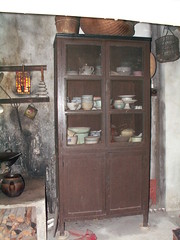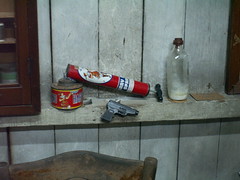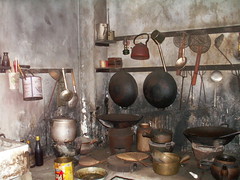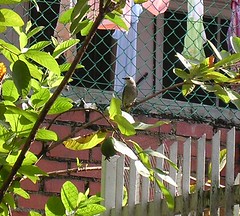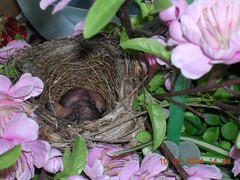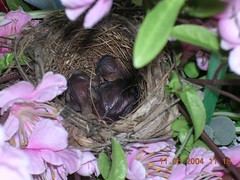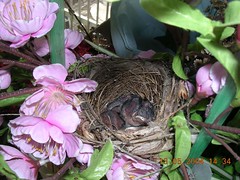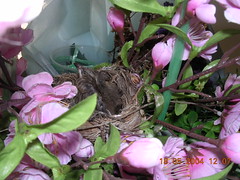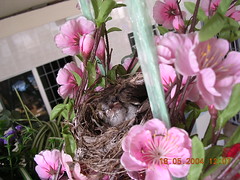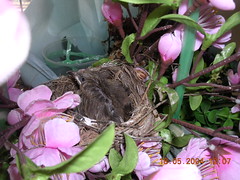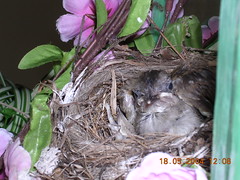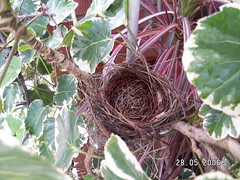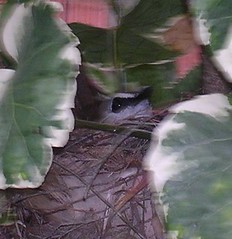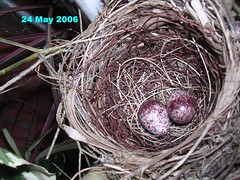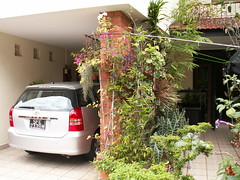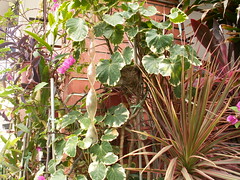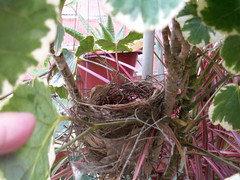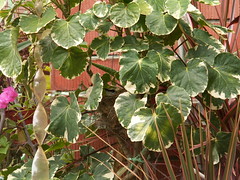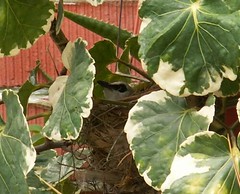This week, everybody seems to be blogging about the General Election and James Gomez. I too should join in … sort of.
I saw, in the front page of yesterday’s newspapers, JG criticizing his opponents for engaging in ‘politics of distraction’. When I got to the back section, I saw some news about the ongoing Thomas Cup and Uber Cup badminton championships. I realized that all the GE news has distracted many sport lovers from the popular sport of badminton, and so I think I should do my part to refocus their attention on badminton by blogging about how we were introduced to the sport of badminton during our kampong days in Lorong Kinchir .
Let me begin by asking you a simple question. What is the best time of the day to play badminton?
You youngsters probably don’t know the answer right? That’s because you are so used to playing in a proper indoor badminton hall. But when we were kids living in the kampong, we could only play in the open air, and the best time to do so was early in the morning when the air was still. Otherwise the wind would do havoc to our game. (See photo below - taken in Malaysia)

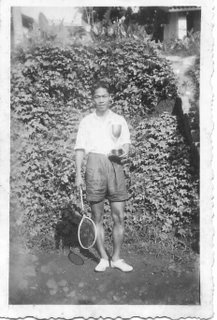
My 7 Uncle, the badminton champ
We were introduced to the game of badminton by our 7th uncle, Ng Yook Soon. He was in fact one of the top badminton players in Malaya in the 50’s and a contemporary of people like All England champion, Eddy Choong. We used to play in front of his house which he converted into a crude badminton court. As it was not possible to paint lines on the ground, what we did was to dig narrow grooves and plant strips of wood to form the lines of the badminton court. Then we painted the surface of the wood white, and voila - you have your badminton court.
 My younger brother, James, smashing in style. Hey I recognize that tree - its a soursop tree.
My younger brother, James, smashing in style. Hey I recognize that tree - its a soursop tree. 
Wave - that's me. Don't you envy our classic Nike's. In the background is our 7 Uncle' house.
 As for rackets, the 2 famous brands during that time were Dunlop and Flight Commander. But we couldn’t afford those until much later. I sure was glad to see 2 similar rackets at the Grassroots Heritage Centre recently. Now you know what I was talking about when I blogged about my precious
As for rackets, the 2 famous brands during that time were Dunlop and Flight Commander. But we couldn’t afford those until much later. I sure was glad to see 2 similar rackets at the Grassroots Heritage Centre recently. Now you know what I was talking about when I blogged about my precious
Dunlop Maxply earlier.
I am shy to say that, in spite of my uncle’s coaching, I never got to be very good in badminton. My younger brother, James was much better. In fact, when I got to secondary school in ACS, I did not even qualify to represent my house. However, when I entered NJC in 1969, I managed to get into the school team. How? Via the back door lor! Here’s how I did it.
At first, when I went for the selection trials, I actually did not qualify. But my good friend, Chou Feng, who was also from ACS got selected for the school team. When he saw my disappointment, he ‘invited’ me to join their training sessions. At first I was too embarrassed to do so, but after much prompting, (Don’t care lah! Just join in. Nobody will dare to throw you out one) I did one of the bravest things in my life. I ‘kar-kar’ gate-crashed, joined in their training. When our coach, Mr Seah Lye Huat first saw me, he gave me a puzzled look. But fortunately, he did not pursue the matter, and I remained on the team as a doubles reserve. My partner was a crew-cut, Chinese stream guy by the name of Heng Chye Kiow. Today, I understand he is a VIP in transport giant, Comfort Delgro. (not the sort of ‘VIP’ that Dr Tan Wee Kiat wrote about in NJC69Net, Issue no. 3 - Very Impotent Person. Haha). On occasions when we were up against the weaker opponents, Chye Kiow and I were given the opportunity to ‘kick some butts’.
 I remember the tough training under Mr Seah who was a former Thomas Cup player. I think he was from Bartley Secondary School. Besides lots of skipping and running, we, the doubles players had to perfect our low service. To achieve that, he made us serve repeatedly to this guy in our team called Ng Chor Yau. In case you do not know, he was in the Singapore national badminton team at that time (maybe national champion even). Every time, we served a little too high – WHAM! You can get the picture I think. I don’t remember much else about those days, except one time when Mr Seah brought us to the famous Kuok Road hawker centre for dinner after evening training.
I remember the tough training under Mr Seah who was a former Thomas Cup player. I think he was from Bartley Secondary School. Besides lots of skipping and running, we, the doubles players had to perfect our low service. To achieve that, he made us serve repeatedly to this guy in our team called Ng Chor Yau. In case you do not know, he was in the Singapore national badminton team at that time (maybe national champion even). Every time, we served a little too high – WHAM! You can get the picture I think. I don’t remember much else about those days, except one time when Mr Seah brought us to the famous Kuok Road hawker centre for dinner after evening training.  Another memorable occasion was when we participated in the parade at the official opening of the college. I remember proudly putting on our gaudy red blazer and being inspected by PM Lee Kuan Yew himself.
Another memorable occasion was when we participated in the parade at the official opening of the college. I remember proudly putting on our gaudy red blazer and being inspected by PM Lee Kuan Yew himself.
I had wanted to blog about this for a long time, but was too lazy to sit down, dig out the old photos, scan them and write down the details. What finally got me to overcome the inertia was not the general elections, but a (virtual) meeting with a former NJC teacher, Dr Tan Wee Kiat who recently joined our Friends of Yesterday.sg group.
Welcome to the blogosphere, Dr Tan.
 Thank goodness, my mum never forced us to wear such pants. Now I know why my sister often told his son to sit properly and don't 'open coffee shop'.
Thank goodness, my mum never forced us to wear such pants. Now I know why my sister often told his son to sit properly and don't 'open coffee shop'.